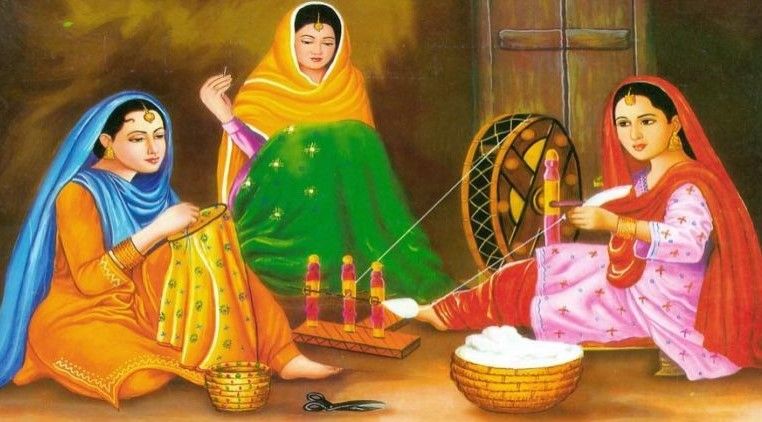Phulkari : the floral art of Punjab

Phulkari, which means “flower work” in Punjabi, is a traditional embroidery style from Punjab. This beautiful art is not just about stitching; it represents the rich culture, emotions, and creativity of the people of Punjab. For centuries, women in Punjab have used Phulkari to express their artistry, and today, it stands as a proud symbol of Punjabi heritage.
The History of Phulkari
The story of Phulkari goes back hundreds of years. It is even mentioned in the Guru Granth Sahib, the holy book of Sikhism, which shows its importance in Punjabi life. Many believe that Phulkari started in the 15th century and became especially popular during the Mughal Empire. The Mughals brought new ideas and designs that influenced this art form, making it even more beautiful.
Unlike many crafts that were created to be sold, Phulkari was originally made at home. Women would embroider Phulkari on fabrics for their own use or as gifts for their families. It was a personal art that celebrated life’s special moments, like weddings, festivals, and even births.
How Phulkari is Made
Phulkari embroidery is done on plain handspun cotton or khaddar cloth. The fabric is usually dyed in bright colors, like red, orange, or mustard, which are considered lucky in Punjabi culture. Women use silk threads, known as pat, to create stunning designs on the fabric. The stitching is done from the back of the cloth, and the patterns appear on the front.
One of the unique things about Phulkari is its simplicity. It uses a basic long and short darning stitch, but the patterns and colors make it look extraordinary. The intricate floral and geometric designs reflect the creativity of the women who make them.
Types of Phulkari
Phulkari is not just one style of embroidery; it has many variations, each with its own special meaning and use. Here are some popular types:
Bagh: This type of Phulkari covers the entire fabric with embroidery. The word "Bagh" means garden, and this style looks like a garden full of colorful flowers. It is often used for special occasions like weddings.
Chope: Made for brides, Chope is embroidered on both sides of the cloth. It is traditionally gifted to the bride by her grandmother.
Sainchi Phulkari: This style tells stories through its designs. It features everyday scenes from rural life, such as farming, animals, and festivals.
Darshan Dwar: This type is made as an offering to a temple or gurdwara, symbolizing devotion and gratitude.
Thirma: Thirma uses a white base fabric and is often associated with purity and peace. It was usually worn by older women in the family.
The Role of Phulkari in Punjabi Life
In Punjabi culture, Phulkari is not just a piece of clothing; it is a part of life. Women start embroidering Phulkari at a young age, and by the time they get married, they often have a collection of Phulkari items. These include shawls, dupattas, and even decorative pieces for the home.
Phulkari is deeply connected to Punjabi traditions. For example, during weddings, the bride often wears a Phulkari dupatta. It is also used during special ceremonies and festivals, showcasing the vibrant spirit of Punjab.
Phulkari in Modern Times
With time, Phulkari has changed from being a household craft to a globally recognized art form. Today, it is used in various ways, from clothing like sarees and kurtas to accessories like bags and shoes. Designers have also modernized Phulkari by incorporating it into contemporary fashion, making it popular among people all over the world.
Unfortunately, the rise of machine-made Phulkari has affected the traditional craft. Handmade Phulkari takes a lot of time and effort, so it is often more expensive than machine-made versions. However, many people still value and support the authentic, handmade Phulkari because of its beauty and cultural significance.
Phulkari is more than just embroidery—it is a legacy that has been passed down through generations of Punjabi women. It tells stories, celebrates life, and connects people to their roots. By appreciating and supporting this beautiful art form, we can help keep the spirit of Punjab alive for future generations.
Phulkari is a reminder of the power of tradition and creativity, showing how art can bring beauty and meaning to everyday life.